Classical choreography for beginners
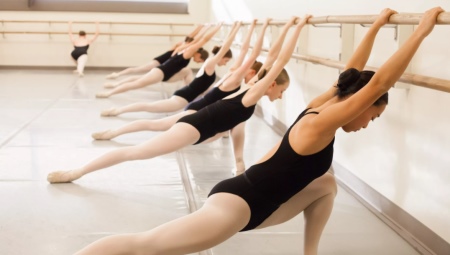
Classical choreography is the basis of dance art. Therefore, many people who want to become professional dancers or just learn how to enjoy dancing have to learn its basics.
General principles
Classical choreography is an activity that is suitable for both adults and children. The benefits of regular exercise are quite large. They are helping:
-
form posture or correct it;
-
make a person more flexible and resilient;
-
get rid of extra pounds, and make the body more fit;
-
learn to move more gracefully to the music.
In children, regular choreography exercises develop discipline as well as hard work. Girls and boys who play sports become more stubborn and achieve their goals faster.
In addition, learning about classical choreography allows you to become more receptive to music. A person learns to improvise while dancing. Therefore, it is easier for him to master new dance directions. Having mastered the classics of dance, it will be easier for him to learn how to dance both ballroom and modern dances.
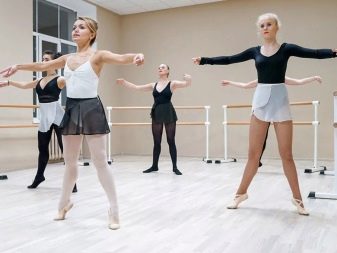
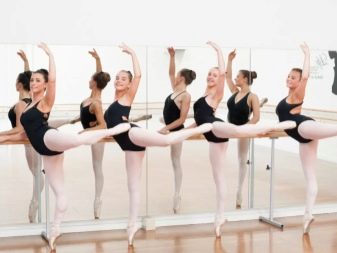
Main positions
It is worth starting classes in classical choreography with the study of the basic positions. This can be done even at home. A beginner dancer must first learn to control the position of his arms and legs.
Hands
The first step is to learn the basic hand positions. In the process of performing them, the stomach should always be drawn in, and the back should be straight. During each movement, it is important to feel all the muscles in your body.
There are four main positions. Each of them has its own characteristics.
-
Preparatory. The first position is as simple as possible.The dancer stands with his hands down. At the same time, his hands and elbows should be rounded.
-
First. It is very easy to move from the preparatory position to the first one. To do this, you need to gently raise your hands. They must be held directly in front of you. The arms should be straight at the level of the diaphragm.
-
Second. The next position differs from the previous one only in that the hands are spread out in different directions. At the same time, the elbows and hands should be slightly rounded. The dancer must control the movement of his hands, and also make sure that they do not sag.
-
Third. Moving to the third position, the arms must be gently raised above the head.
You can even learn all of these simple positions at home. No special equipment is required for this. While learning the basics of dance on your own, the positions are best practiced in front of a mirror. So a person will be able to control the correctness of all his movements.
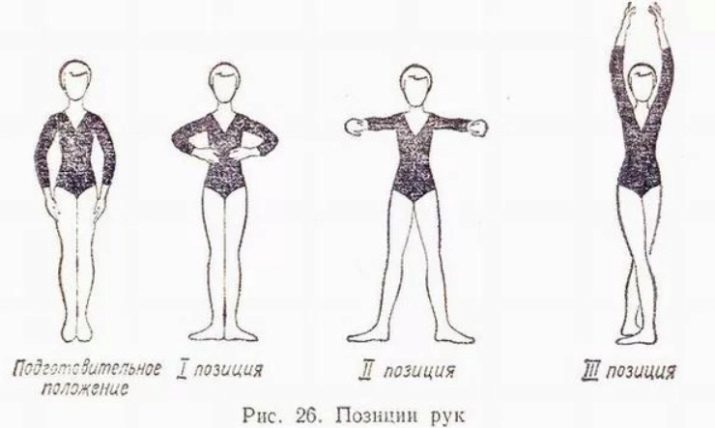
Legs
Having dealt with the arms, you can study the position of the legs. This activity must also be approached responsibly. There are six main positions.
-
First. In this position, the dancer stands with his heels together. In this case, the socks should be turned in different directions. Stand in this position with your back straight.
-
Second. The next position is very similar to the first one. The difference lies in the fact that the legs are at a short distance from each other. It should be equal to the length of one foot.
-
Third. To perform this position, the legs must be crossed. In this case, the feet should be parallel. In this position, they are still in contact with each other.
-
Fourth. This position differs from the third quite a bit. At the same time, the feet are located at a small distance from each other. It is important that the body weight is distributed evenly.
-
Fifth. In this position, the feet are in contact with each other in an inverted position. In this case, the toe of one leg is connected to the foot of the other.
-
Sixth. In this position, the legs are already in the normal position.
For people who are learning to dance from scratch, it is best to do the exercises without pointe shoes. So they can learn to better feel their body and control the movements of their legs. Only dancers with little experience should stand on pointe shoes.
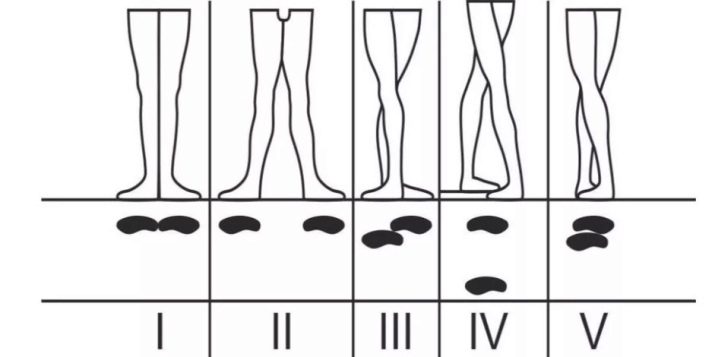
Movement group overview
There are several main groups of movements in classical choreography.
-
Plie. This term refers to the bending of the knees. You can squat on two legs or on one. Plie helps to develop the elasticity of the joints, as well as strengthen the ankle.
-
Etandre. This group includes movements associated with stretching individual limbs, as well as the entire body.
-
Releve. The term relevé means toe up. These movements help to strengthen the ankle.
-
Glisse. This term refers to the step at which the toe slides across the floor. Such movements look very beautiful and expressive.
-
Saute. This term is used to refer to simple jumps in classical dance. Such movements should be learned to do for people who already have a little dance experience.
-
Tour. The term is used to refer to rotations around its own axis.
Having learned this basic set of movements, a beginner dancer will already be able to move beautifully to any music. It will also help him feel his body better.
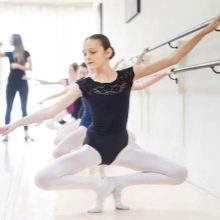
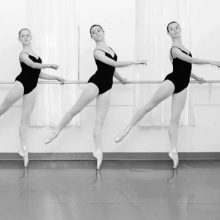
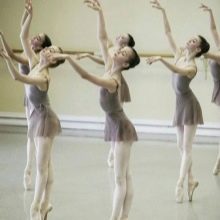
A set of exercises at the machine
A classical dance lesson begins with a repetition of several basic exercises that are traditionally performed at a ballet barn. All of them are aimed at developing the mobility and flexibility of the human body. The classic complex consists of several exercises.
-
Plie. It is worth starting to "warm up" by working out the plie. You need to practice both half and deep squats. The exercises are usually performed in turn.
-
Batman tandyu. This exercise helps to strengthen the ankle and develop the muscles. When doing it, the sock slides along the floor. At the same time, the leg is tense, and the lift is extended.
-
Batman zhete. This term refers to the forward throw of the toe. At the same time, the legs are sharply parted to the sides, and the internal muscles of the thigh are tense.
-
Batman fondue. This movement is fluid. The supporting leg drops gently into the plié. This is done as smoothly and slowly as possible. In this case, the second leg must be bent at the knee. Her sock should touch the ankle. On the rise, the supporting leg must be extended, and the working leg must be sharply straightened.
-
Batman frappe. This movement is sharp. In the process of its implementation, the foot of the working leg leans against the ankle of the supporting leg.
-
Batman dive. This exercise is one of the easiest. In the process of performing it, the leg must be abruptly torn off the floor. Immediately after that, she goes back down. The movement looks as if the dancer touches the hot floor with his foot for a second.
-
Grand batman zhete. This exercise is reminiscent of a batman jete. But in the process of doing it, the working leg rises a little higher.
All movements at the machine must be performed with a straight back. At the same time, the legs move in turn, first forward, and then to the side and back.
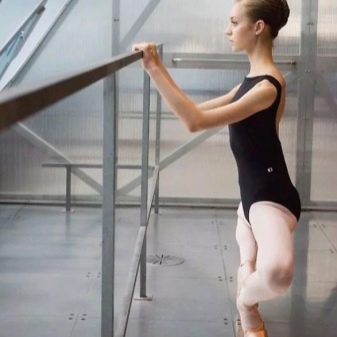
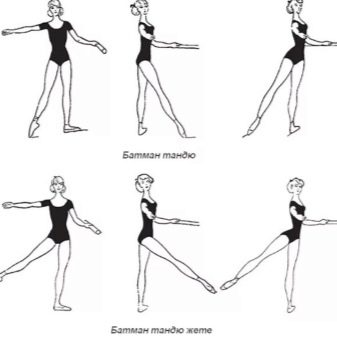
Useful Tips
There are many ways to learn the basics of classical choreography. It is believed that only a person who has been doing ballet since childhood can become a serious dancer. Therefore, it is best to send a child to dance at the age of 4-7 years.
An adult can learn the basics of classical choreography in several ways.
-
Online lessons. Those who just want to put their body in order a little or learn how to move beautifully should pay attention to the master classes on the Internet. They will help you learn the basic movements of the dance, as well as a little bit of liberation. A big plus of such lessons is that a person is engaged in alone with himself. This means that he will not feel constrained.
-
School. Another good option for aspiring dancers is to take classes at a dance school. They need to be visited regularly. In this case, progress will be noticeable. The school should be chosen based on reviews, as well as recommendations from loved ones.
-
Classes with a personal teacher. The fastest way to learn classical choreography will be training with a personal teacher. A good coach will quickly determine the level of his student, and will also select the most suitable set of exercises for him.
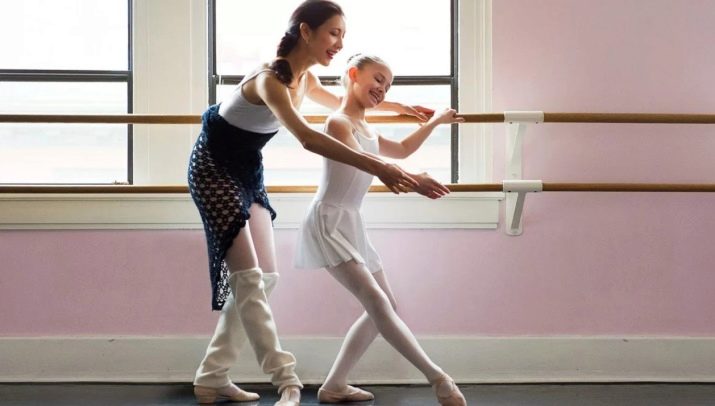
In the process of learning to dance, a person should listen to the following tips.
-
Exercise regularly. Regardless of whether a person trains at home or in a dance school, it is very important to practice dancing regularly. It is worth doing ballet 2-3 times a week. A typical workout takes an hour or an hour and a half. Literally in a month of such classes, the dancer will see the first results that can motivate him for further development.
-
Purchase a machine. A person who is learning the basics of ballet dance should buy a small machine. After all, all daily stretching exercises are performed on it.
-
Choose comfortable exercise clothes. A real dancer doesn't need pointe shoes and a tutu. A comfortable sports uniform will suit him perfectly. It usually consists of tight pants and a crop top. Comfortable ballet slippers will complement this training outfit. You can buy them at almost any dance store. When buying slippers, you should pay attention to smaller shoes. After all, it should fit very tightly to the foot.
-
Exercise in a good mood. When a person is under stress, his body is stiff. Therefore, he cannot move as easily and naturally as the dance requires.
Classical choreography classes require full dedication and take quite a long time. But the result is usually worth the effort. Indeed, in just a couple of months, young dancers will be able to become more graceful, light and flexible.

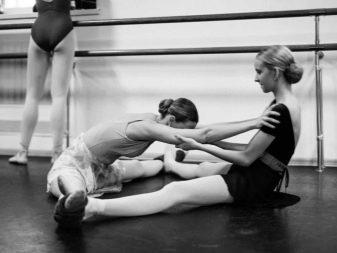
For a lesson in classical choreography, see below.








